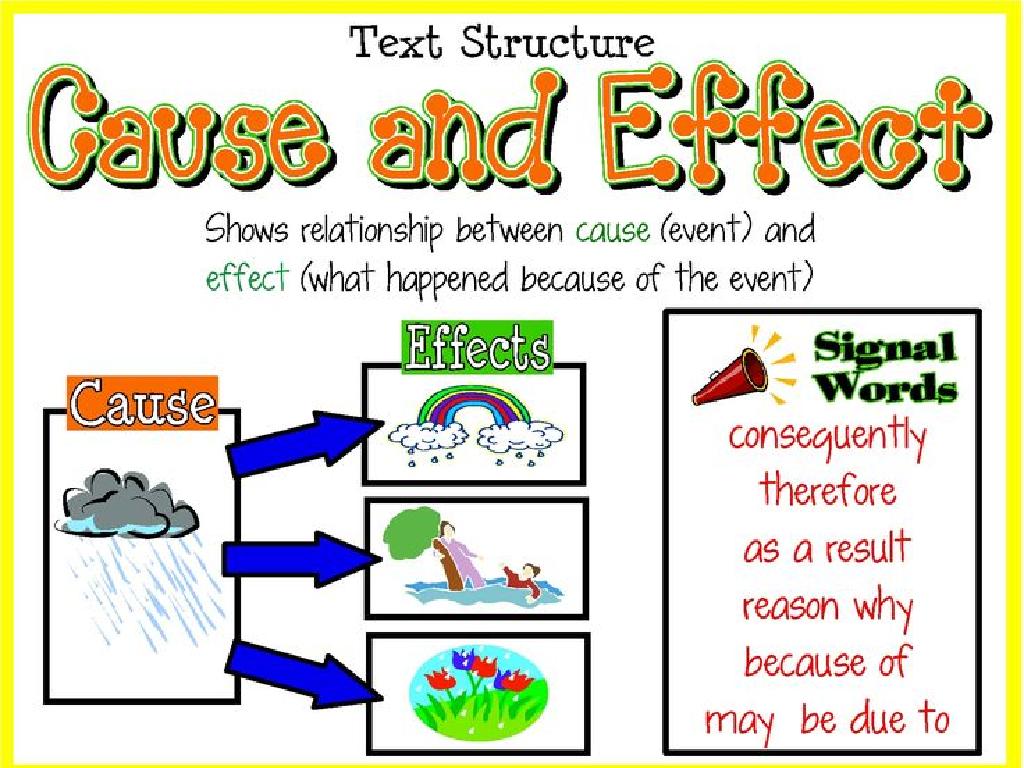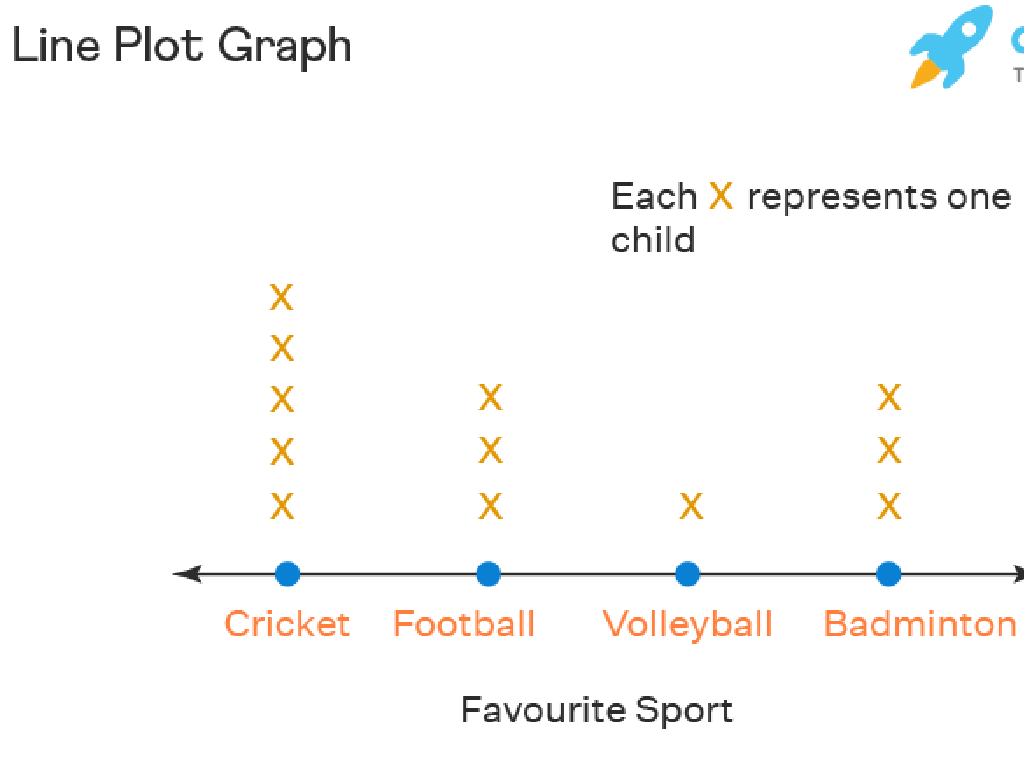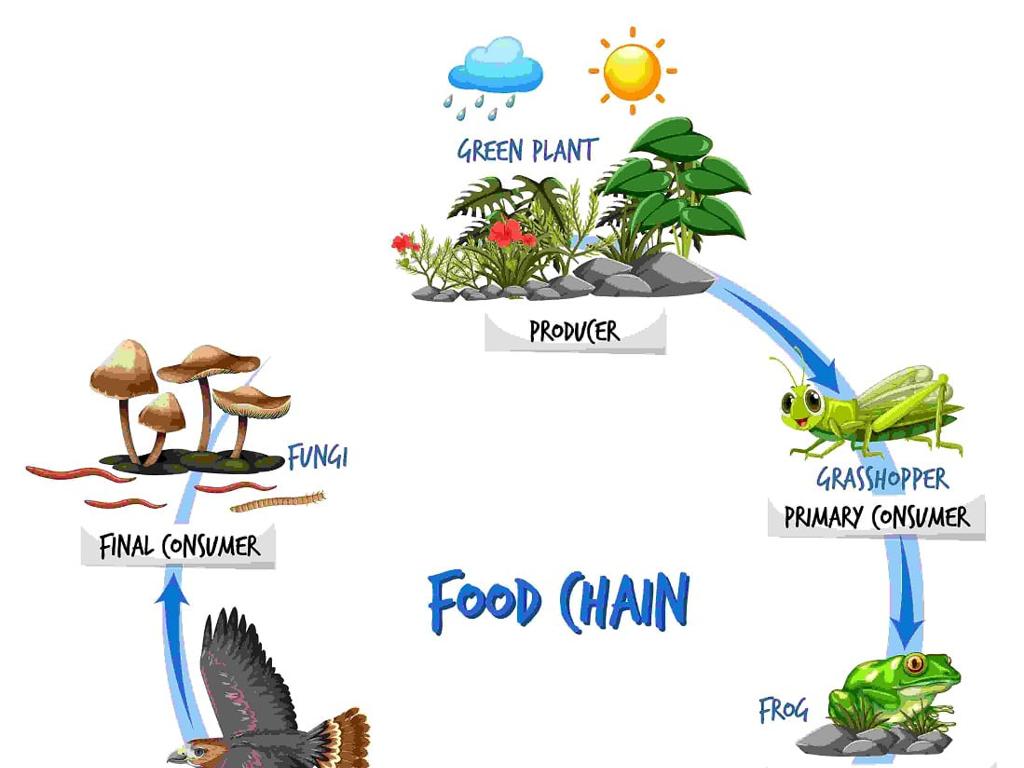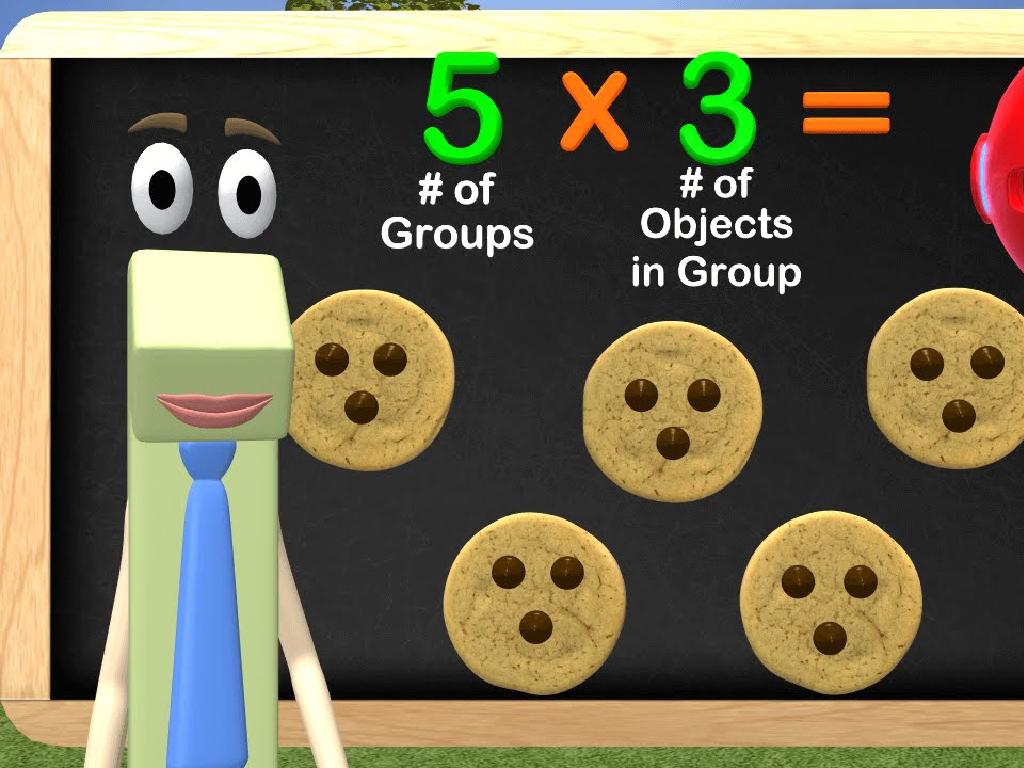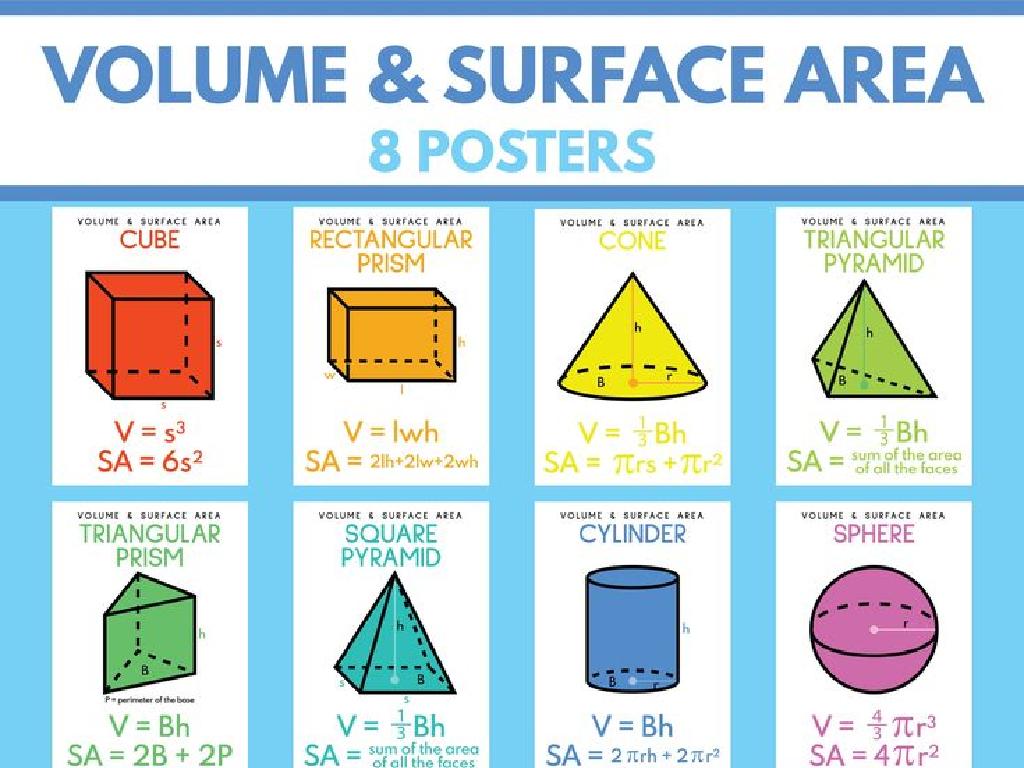Angle-Angle Criterion For Similar Triangles
Subject: Math
Grade: Eighth grade
Topic: Transformations And Congruence
Please LOG IN to download the presentation. Access is available to registered users only.
View More Content
Introduction to Similar Triangles
– Exploring similarity in geometry
– Similarity involves same shape, different size.
– Defining similar triangles
– Triangles with same angles, proportional sides.
– Criteria for triangle similarity
– Conditions that make two triangles similar.
– Angle-Angle (AA) similarity
– Two triangles are similar if two angles match.
|
This slide introduces the concept of similarity within geometry, focusing on similar triangles. Similarity refers to figures that have the same shape but may differ in size. For triangles to be considered similar, they must have corresponding angles that are equal and corresponding sides that are proportional. The criteria for triangle similarity include Angle-Angle (AA), Side-Angle-Side (SAS), and Side-Side-Side (SSS), but this presentation will focus on the AA criterion. The AA criterion states that two triangles are similar if they have two corresponding angles that are congruent. This foundational knowledge sets the stage for understanding how geometric figures can be transformed while maintaining proportionality and shape.
Angle-Angle Criterion for Similar Triangles
– Define AA Criterion for similarity
– AA Criterion states that two triangles are similar if they have two corresponding angles congruent.
– Two angles ensure triangle similarity
– If two angles match, the third one must too, confirming similarity.
– Compare triangles using AA
– Look at two triangles and check if any two angles are equal to use AA.
– Practical applications of AA
– Use AA to solve problems in geometry, like finding missing sides.
|
The Angle-Angle (AA) Criterion is a fundamental concept in understanding triangle similarity. It states that if two angles of one triangle are congruent to two angles of another triangle, then the triangles are similar. This similarity implies that all corresponding angles are equal and the sides are proportional. When comparing two triangles, if you can verify that at least two angles in one triangle are the same as two angles in the other, you can conclude that the triangles are similar without knowing side lengths. This criterion is particularly useful in geometric proofs and real-world applications, such as map-making or architecture, where determining scale is important. Encourage students to practice by identifying pairs of similar triangles and using the AA Criterion to justify their similarity.
Exploring Angle-Angle (AA) Similarity
– Identify equal angles in triangles
– Find two pairs of angles with the same measurements in separate triangles.
– Use proportions to demonstrate similarity
– If two triangles have their corresponding angles equal, their sides are proportional.
– Real-life AA similarity examples
– Architectural designs often use similar triangles for structural integrity and aesthetic.
– Understanding AA similarity criterion
|
This slide introduces the concept of Angle-Angle (AA) Similarity, which is a way to determine if two triangles are similar just by comparing two pairs of corresponding angles. Students should learn how to identify equal angles and use proportions to show that corresponding sides are proportional, which confirms similarity. Real-life applications, such as in architecture, can provide tangible examples to help students understand the importance and practicality of AA similarity. The AA Similarity Criterion states that two triangles are similar if two angles of one triangle are congruent to two angles of the other triangle. Encourage students to find examples of similar triangles in their surroundings or in various design contexts.
Proof of the Angle-Angle Criterion
– Understanding AA Criterion
– AA Criterion states that two triangles are similar if two angles are congruent.
– Step-by-step geometric proof
– We’ll use geometric theorems to demonstrate why the AA Criterion holds true.
– Logical reasoning of AA
– The logic is based on the fact that the sum of angles in a triangle is always 180 degrees.
– Practical implications
|
This slide aims to explain the Angle-Angle (AA) Criterion for determining the similarity of triangles. Begin by discussing the AA Criterion, which posits that two triangles are similar if they have two corresponding angles that are congruent. Move on to a step-by-step proof using geometric theorems such as the sum of angles in a triangle and properties of parallel lines. Emphasize the logical reasoning behind the criterion, which hinges on the fact that if two angles are known, the third is determined since the total must be 180 degrees. Conclude by discussing the practical implications of this criterion in solving problems involving similar triangles. Encourage students to think about how this criterion simplifies the process of proving similarity in geometric figures.
AA Criterion for Similar Triangles: Practice
– Identify similar triangles with AA
– Two triangles are similar if two angles of one are equal to two angles of the other.
– Determine triangle similarity
– Compare two sets of angles from different triangles to check for similarity.
– Apply AA to solve problems
– Use the AA criterion to find unknown measures in similar triangles.
– Review with practice examples
|
This slide is aimed at reinforcing the Angle-Angle (AA) criterion for determining the similarity of triangles through practice problems. Students should understand that if two angles of one triangle are congruent to two angles of another, the triangles are similar. This concept is crucial for solving problems involving similar triangles, such as finding unknown side lengths or angle measures. Provide a variety of practice problems where students apply the AA criterion to different scenarios. Encourage them to explain their reasoning for each step to deepen their understanding. The review section should include examples worked out step-by-step to serve as a model for students.
Class Activity: Exploring Similar Triangles
– Group activity: Find similar triangles
– Use AA criterion for justification
– Two angles of one triangle are congruent to two angles of another
– Document your triangle findings
– Prepare a class presentation
– Share how you used AA criterion to determine similarity
|
This interactive group activity is designed to help students apply the Angle-Angle (AA) criterion to find similar triangles in their environment. Divide the class into small groups and instruct them to identify objects or structures that form triangles. Students should use the AA criterion, which states that two triangles are similar if two of their corresponding angles are congruent, to justify their findings. Each group will document the triangles they find, noting the congruent angles. Finally, groups will present their findings to the class, explaining how they used the AA criterion to determine similarity. This activity will reinforce the concept of triangle similarity and provide a practical application of the AA criterion. Possible activity variations include finding triangles in the classroom, in textbooks, or from pictures provided by the teacher.
Recap: Angle-Angle Criterion for Similarity
– Review of Angle-Angle Criterion
If two angles of one triangle are congruent to two angles of another, the triangles are similar.
– Significance in Geometry
Understanding similarity leads to solving real-world problems and proving geometric theorems.
– Q&A Session
– Encourage further inquiry
Explore more examples or applications of triangle similarity in and out of class.
|
This slide aims to consolidate the students’ understanding of the Angle-Angle Criterion for triangle similarity. Begin with a brief review of the criterion, ensuring students can identify similar triangles using this method. Emphasize the importance of triangle similarity in various aspects of geometry, including problem-solving and proof construction. Open the floor to a Q&A session, addressing any uncertainties or confusion. Encourage students to continue exploring the concept with additional examples or applications, fostering a deeper comprehension and curiosity about the subject.

